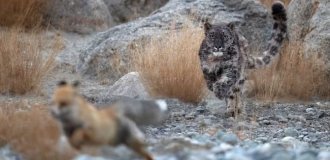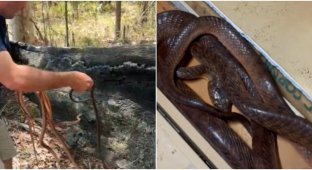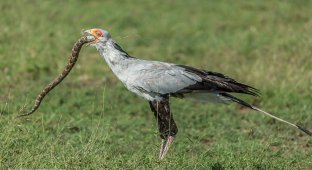A sea snake whose venom is many times more powerful than that of a cobra (7 photos)
The sea krait is one of the most venomous snakes in the world. In the continuation of the post you will learn a little about the life of this animal. 
The sea krait, large flat-tailed krait, or erabu, is a toxic reptile from the family Slatidae and the subfamily of sea kraits. They can be distinguished by their gray-yellow color with wide black stripes and impressive dimensions: adult individuals grow up to 170 centimeters in length and weigh about a kilogram. For ordinary snakes this is not much, but for their lifestyle, flat-tails are considered quite large. 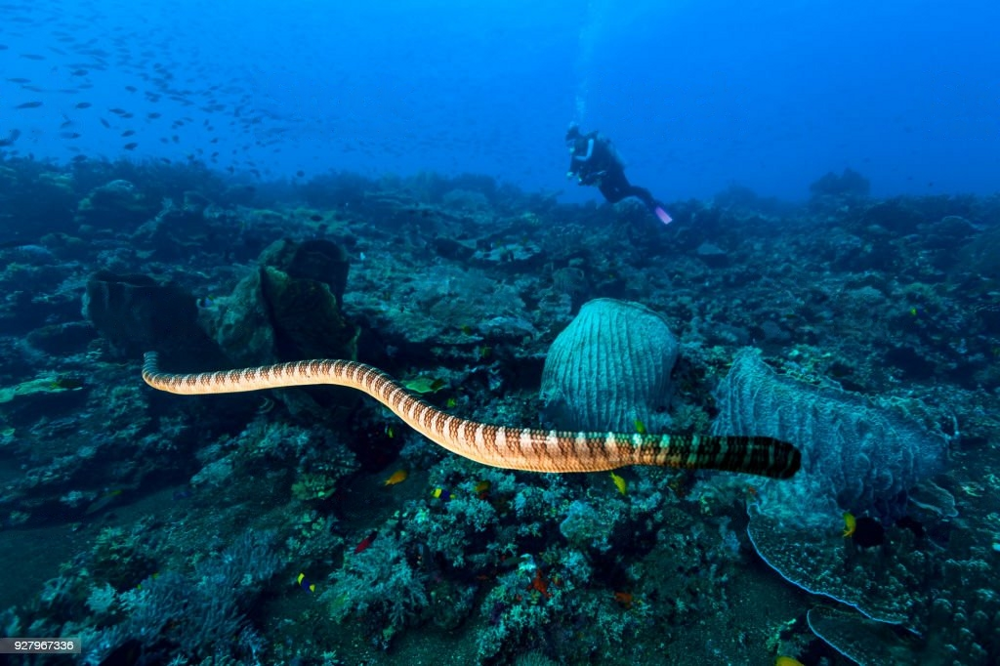
You can meet erabu in the western part of the Pacific Ocean: from Japan in the north to Samoa in the south. Snakes live on coral reefs along the coast and do not swim very far into open waters as they still need to come onto land. Reptiles are somewhere in the middle of the path from a terrestrial form to a completely aquatic one. 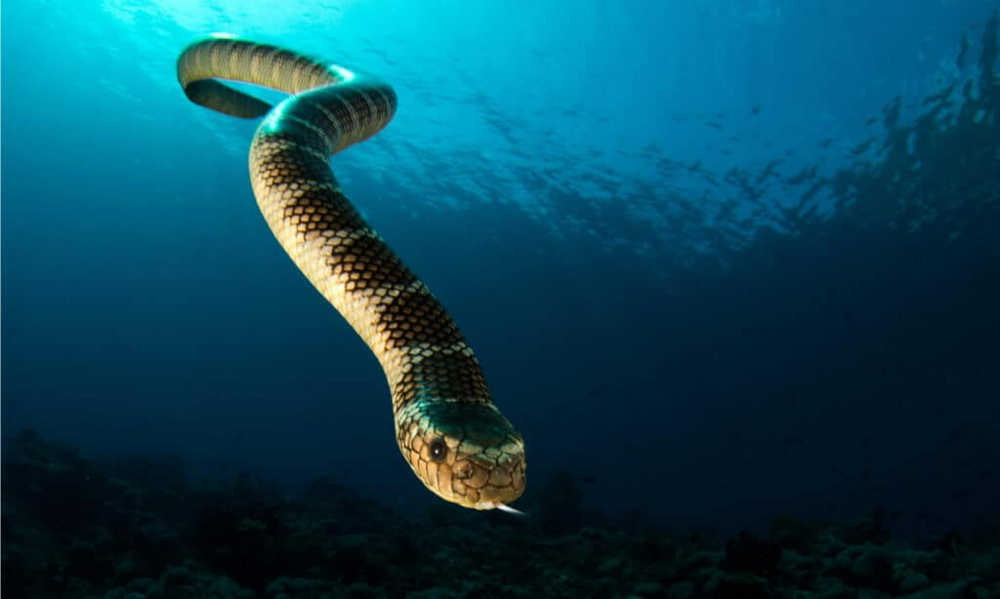
To begin with, the kraits changed their body shape to a more streamlined one and acquired a comfortable paddle. The tail served them: the skin on it became wide and flat, which helps the snake swim better. True, they still can’t keep up with sea inhabitants, so kraits also get food in a special way. During the day, snakes sit in ambush among stones and corals, and at night they swim in search of food. The reptile spends up to 6 hours under water! Snakes feed mainly on small fish: due to the relatively small head, the krait’s mouth cannot open to the size of the Universe, but modestly opens only twice as wide as the muzzle. 
With such an unpresentable introductory set of qualities, Erabu may seem like gray mediocrity, but do not rush to draw conclusions. The most important weapon of reptiles is not strength at all. Their trump card is toxicity. Kraits are very successful in this, even better than some of their terrestrial relatives: the venom of minke whales is considered one of the most powerful in the world. Erabutoxin, the main active ingredient of the poison, affects the nervous system and causes peripheral paralysis. When this substance enters the body, muscle function is disrupted and the nervous system fails, so that the victim cannot move or breathe. 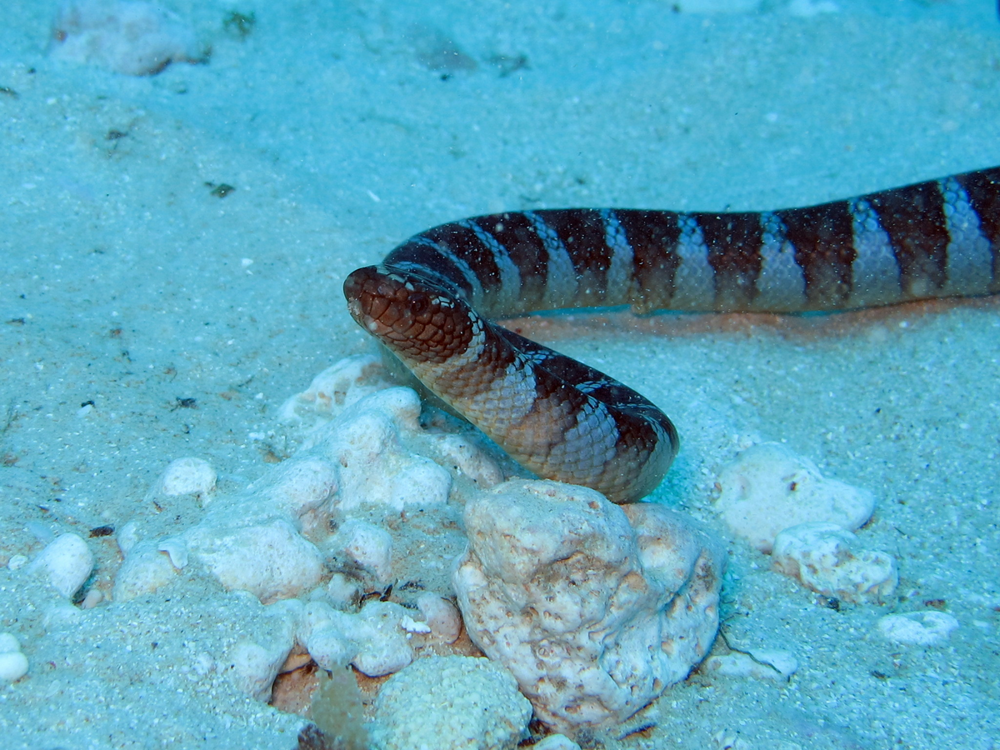
Kraits need such a strong poison to hunt fish - cold-blooded animals do not perceive toxic substances well, therefore the composition of the poison for such prey needs a vigorous one. Snakes rarely bite people and only if they are greatly disturbed. Daredevils say that the poisonous teeth of kraits are located far in the mouth. And, as we know, it opens quite poorly. Like, even if the krayt bites you, its capabilities will not be enough to inflict a poisonous bite. We strongly do not recommend checking this, as well as the friendliness of snakes. Let the experts handle such things. 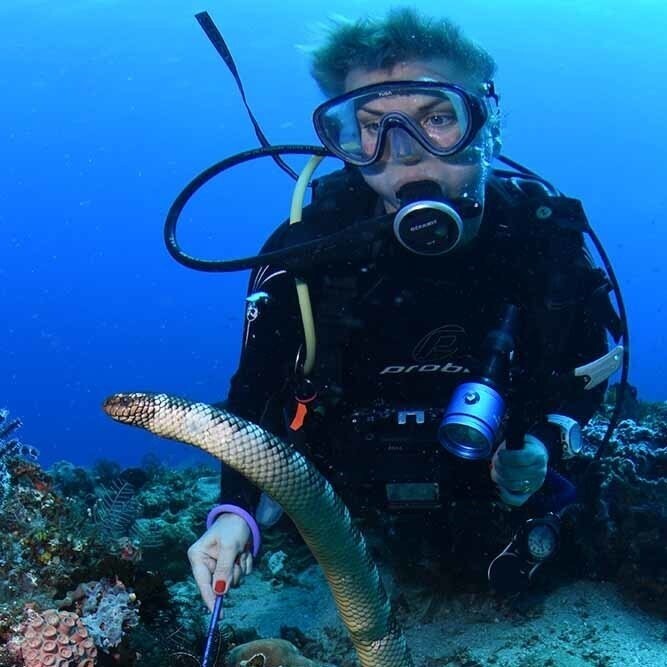
But, despite all the above adaptations, reptiles still need land. Kraits cannot breathe, digest food, or mate underwater. And they need fresh water for drinking - so they swim, dear ones, back and forth, like restless people. It is especially difficult during reproduction. In summer and autumn, snakes come out to rocky shores to weave themselves into huge love balls. 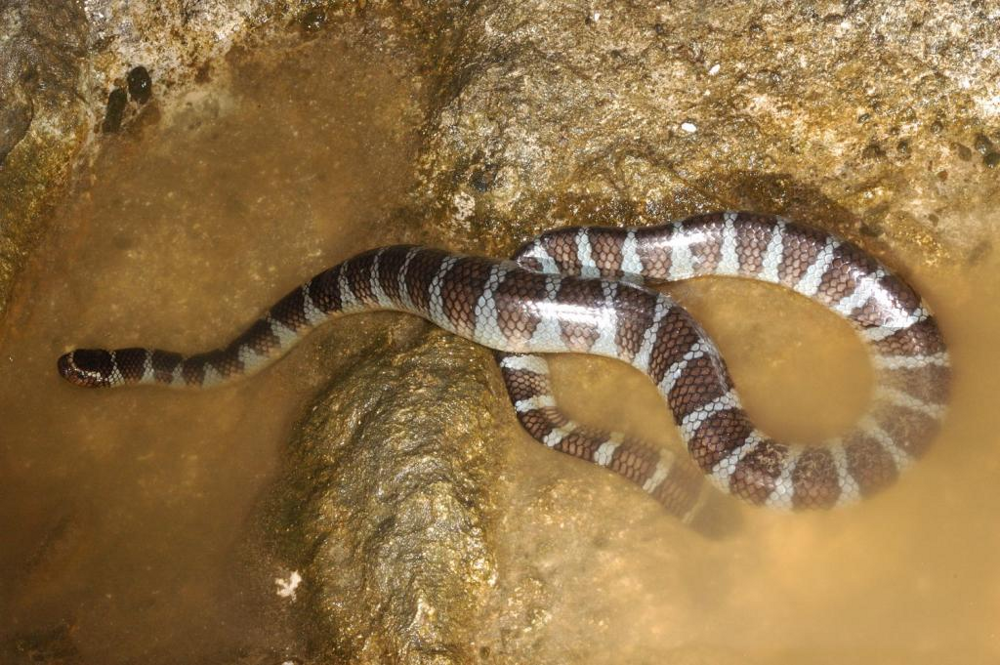
Kraits are almost invisible on the pebbles, so be careful.
Until the mating season passes and the females lay eggs, the snakes will not go to sea and will starve on the shore. One mother will bring up to 8 large eggs, the incubation of which lasts 4-5 months. The baby snakes will pave their own path to life: the kraits do not burden themselves with parental care. But there’s a whole ocean of dangers! For example, people. Minke whales are caught for very specific purposes - skin and meat. Snakes are eaten fried and smoked.
However, the species is not in danger of extinction today. Quite the contrary! Scientists are increasingly recording the appearance of erabu off the coast of South Korea. Apparently, the reptiles got there with warm sea currents and stayed there: global warming made the local waters quite comfortable for these comrades. Who knows what will happen if the ocean warms up even more. Tea, and they will reach domestic shores!









